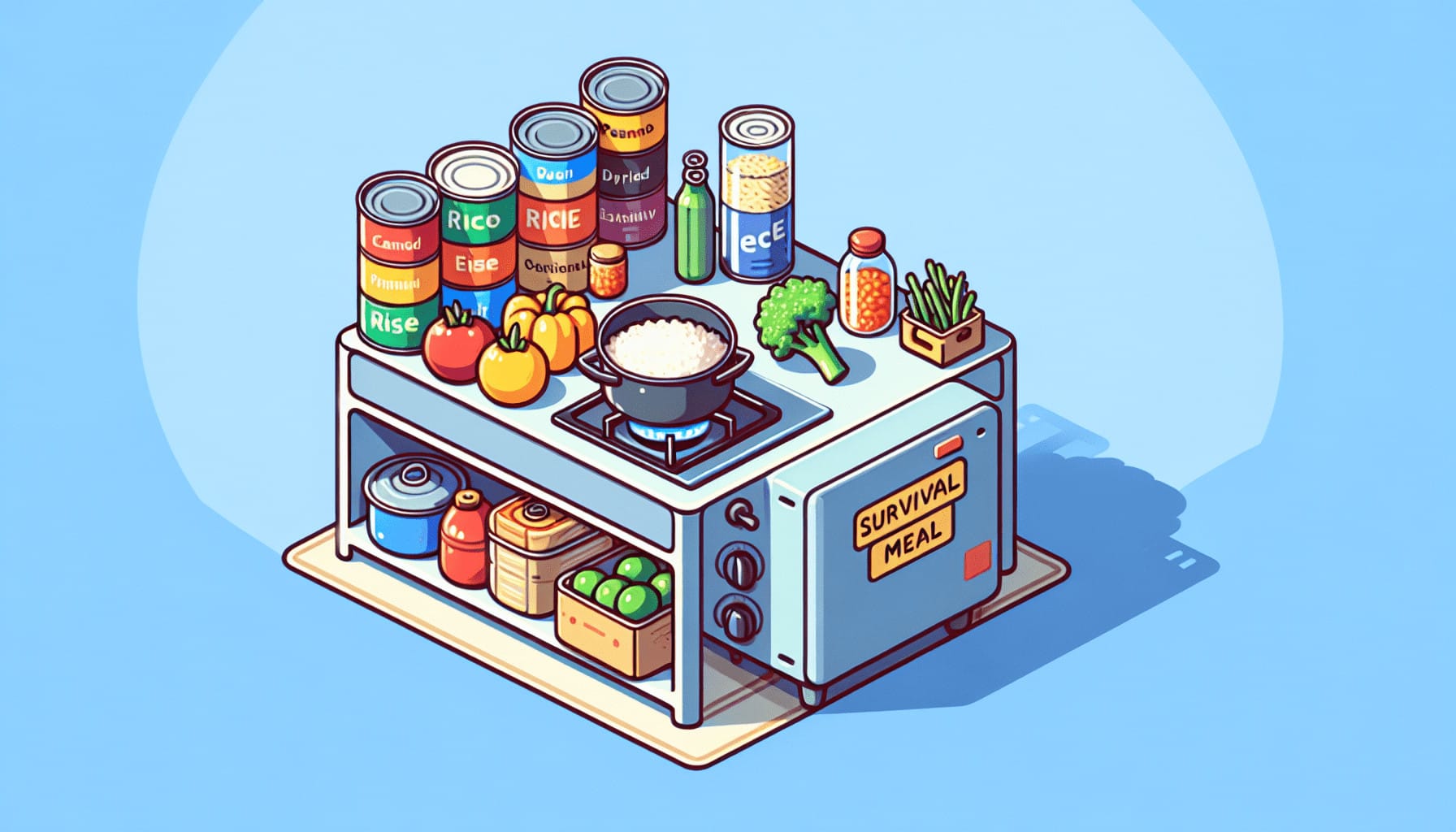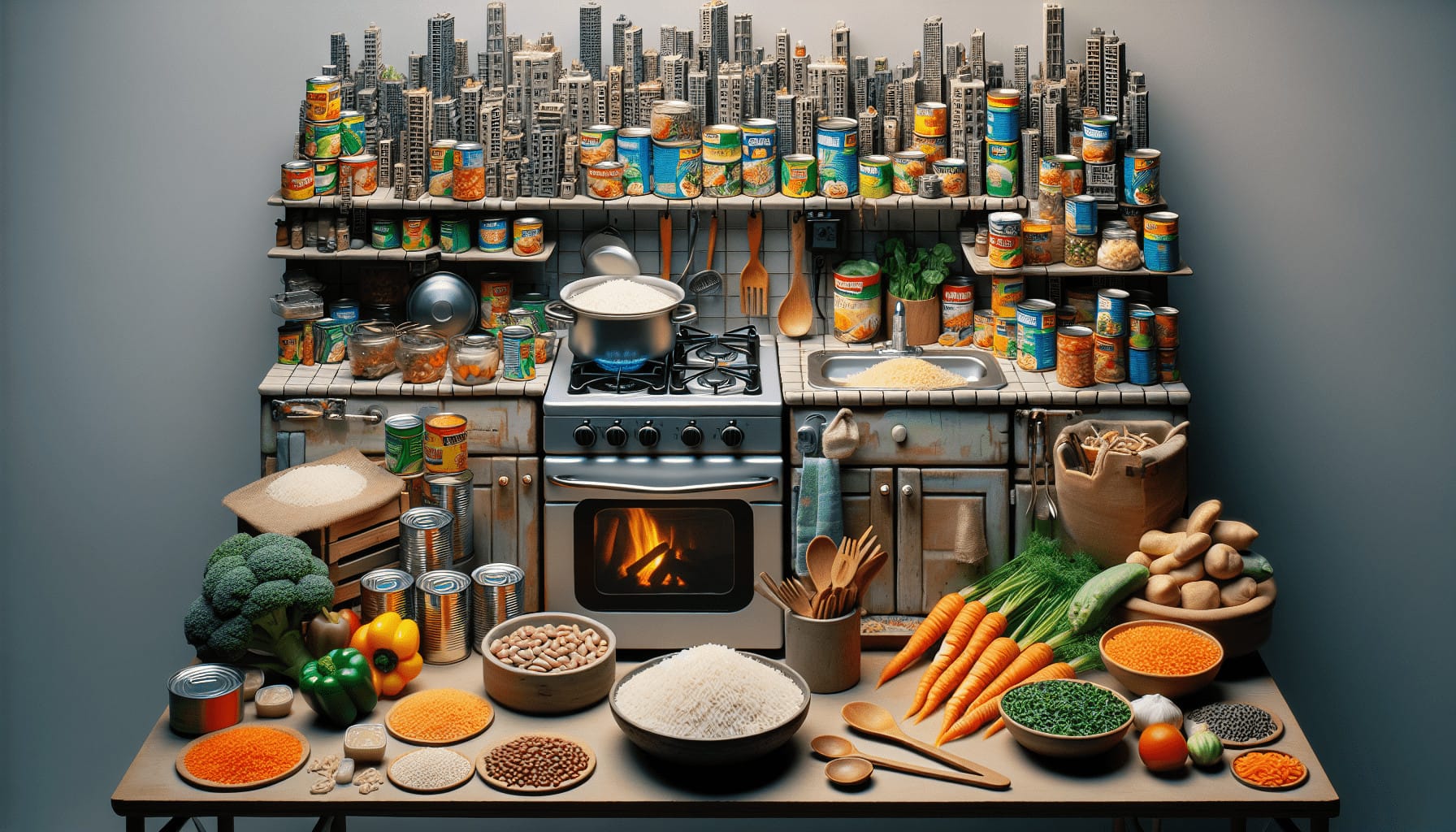Have you ever considered how you would manage food preparation and cooking if you found yourself needing to survive in an urban environment? Surviving in the city can present unique challenges and opportunities, especially when it comes to preparing meals that are both nutritious and practical with limited resources. This guide will walk you through the essentials of preparing and cooking survival meals in an urban setting, even if you’re a complete beginner.

Understanding Urban Survival Cooking
Before jumping into the nitty-gritty, it’s crucial to grasp what ‘survival meals in the city’ actually entail. Unlike rural or wilderness survival, where nature grants certain raw resources, city survival often relies on making the most of processed goods and available amenities. Your focus will be on practicality, longevity, nutrition, and sometimes creativity.
Importance of Nutrition
In any survival situation, nutrition should be your top concern. Knowing which essential nutrients you need, such as proteins, carbohydrates, vitamins, and fats, helps maintain your strength and health. If circumstances reduce your resource availability, your body needs every bit of energy it can get.
Balancing Shelf Life With Nutrition
Balancing shelf life with nutrition is key to preparing survival meals. Canned goods, freeze-dried foods, and other non-perishables are often your best allies. They can provide substantial nutritional value while lasting months or even years if stored correctly.
Essential Supplies for Urban Survival Kitchens
Constructing a basic yet efficient urban survival kitchen is invaluable. Even limited space and resources can house the essentials needed to whip up a decent survival dish. Here’s what you likely need:
Basic Cooking Equipment
In an urban environment, you may not have access to a traditional kitchen. Consider portable options:
- Single-burner camping stove: Compact enough for apartment use, yet powerful enough for cooking.
- Small pot and pan set: Choose ones that stack easily for better storage.
- Non-electric can opener: Necessary for accessing canned goods.
- Lightweight utensils: Multi-purpose tools like sporks and folding knives are advisable.
Key Ingredients
Filling your pantry with the right ingredients can make all the difference. Here’s a basic guide on what to have on hand:
| Category | Suggested Items |
|---|---|
| Grains and Pasta | Rice, pasta, instant oats |
| Proteins | Canned beans, jerky, canned fish |
| Vegetables and Fruits | Canned veggies, dried fruits |
| Fats | Olive oil, coconut oil |
| Seasonings | Salt, pepper, mixed herbs |
Water: The Lifeblood of Survival
Never underestimate the importance of water. In a city, clean water might be scarce during emergencies, so keep water purification tablets or filters on hand. Learn to recognize safe alternate water sources like rainwater or toilet tank water in emergencies. Utilize boiling or purification systems to ensure safety.
Preparing Your Ingredients
Once you have assembled your essentials, understanding how to properly prepare them is your next step. Even non-cooks can excel with a bit of guidance.
Efficient Food Storage
Good storage practices will elongate the life of your ingredients. Opt for air-tight containers and rotate your stock periodically to ensure no item expires unnoticed.
Prepping Basics
Basic preparation strategies can save time and resources:
- Batch cooking: Cook large quantities at once, then store for later.
- Dehydration and rehydration: Dried foods maximize shelf-life and are easy to rehydrate.
- Using leftovers: Convert leftovers into new meals to minimize waste.
Cooking Techniques Under Constraints
Cooking efficiently when resources are scarce can be an art. Here, simplicity is your ally. Opt for methods that best suit your equipment and energy availability.
No-Cook Options
If fuel and cooking facilities are unavailable, consider no-cook meals using your essentials:
- Cold oats: Soak oats overnight with water or canned milk, adding canned fruit or nuts.
- Bean salads: Mix canned beans, vegetables, and a splash of vinegar for flavor.
One-Pot Meals
These save on both time and cleanup. Here’s a simple urban survival recipe:
Recipe: One-Pot Rice and Beans
- Prepare a pot on your single-burner stove.
- Add olive oil and sauté any available canned or dried vegetables.
- Stir in canned beans and rice, adding enough water to cook.
- Season as preferred. Simmer until rice is done and flavors meld.
- Serve hot or as a cold leftover the next day.
Utilizing Spices and Seasonings
These are the secret weapons of urban survival cooking. While they take up little space, they can hugely enhance meals, offering variety and comfort through enhanced flavors.

Nutrition Boosters and Alternatives
A diet consisting mainly of non-perishable food may lack variety, but certain strategies can help diversify your diet and meet nutritional gaps.
Supplementation
Consider vitamin supplements to safeguard against potential deficiencies. Multivitamins offer a broad nutritional safety net, especially when fresh produce is scarce.
Foraging in Urban Environments
Even cities have edible plants if you know what to look for. Always ensure correct identification and legality before collecting any wild plants. Rooftop gardens, community plots, or even your own small garden can yield fresh additions.
Meal Planning Under Uncertainty
To maximize the resources available to you, effective meal planning is crucial. Proper planning saves time, minimizes waste, and guarantees variety.
Creating a Diverse Menu
Split your ingredients into groups for varied meal options while balancing your diet. Diversifying meals across the week prevents monotony.
Flexibility in Planning
While meal plans are useful, staying flexible prepares you for any surprises. Improvisation can turn a potential meal disaster into a tasty new creation.
Maintaining Sanitation and Safety
Safe cooking practices not only keep your food uncontaminated but also assure your continued health and safety.
Cleaning and Hygiene
Keep your cooking space clean even in survival situations. If water is limited, prioritize rinses for hands and essential equipment. Use cloths or wipes to keep surfaces hygienic.
Safe Handling of Canned and Dried Foods
Inspect cans for any dents or damage, which might indicate contamination risks. Use dried foods swiftly upon exposure to air, as they spoil faster once rehydrated.
Adaptability and Creativity in Urban Survival Cooking
Finally, making the best of limited options often demands experimentation and ingenuity. Allow yourself the freedom to try unconventional methods and recipes under constraints. Innovation not only uses available resources effectively but often leads to exciting and flavorful meals.
Encourage Resourcefulness
Learn from each cooking attempt, making improvements with every dish prepared. Harness your environmental features—even a sunny windowsill can work as a makeshift solar dehydrator.
Share and Learn
Connect with others in city survival situations to swap resources, knowledge, and meals. This network not only enhances your skills but reinforces community—important for morale and survival alike.
Whether you’re dealing with an emergency or simply experimenting with sustainable urban living, understanding how to prepare and cook survival meals in the city can transform anxiety into confidence. With these guidelines, you’re now more informed and hopefully inspired to face urban challenges with culinary resilience.
